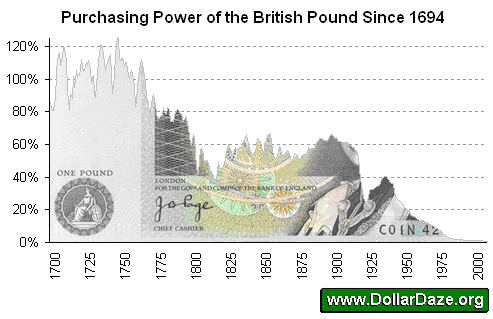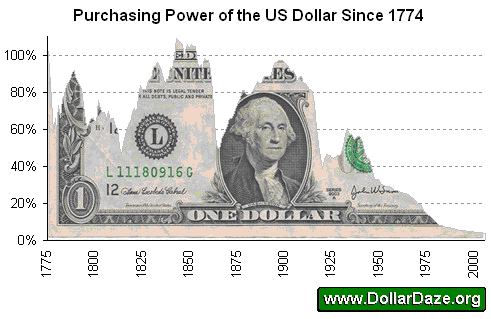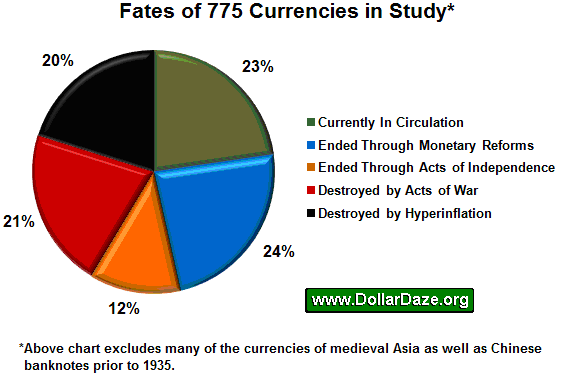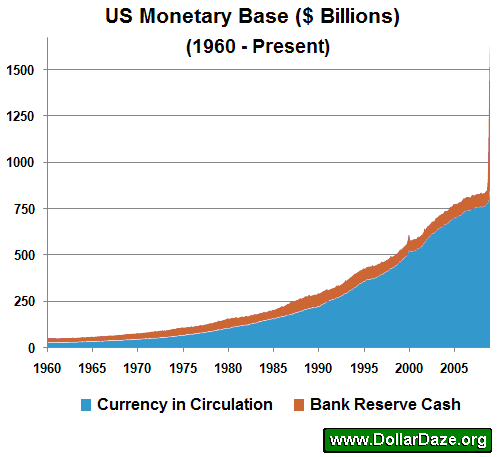A History of Paper Money
Paper money from China to Sweden, cardboard coins to dalers and dollars...
"Paper money eventually returns to its intrinsic value – zero."
THE FIRST WIDESPREAD and well-documented use of paper money was in China during the Tang (618-907 A.D.) dynasty, writes Mike Hewitt of Dollar Daze, sometime around 800 A.D.
Paper money spread to the city of Tabriz, Persia in 1294 and to parts of India and Japan between 1319 to 1331. However, its use was very short-lived in these regions. In Persia, the merchants refused to recognize the new money, thus bringing trade to a standstill. By 1455, after over 600 years, the Chinese Abandoned Paper Money due to numerous problems of over issuance and hyperinflation.
The first instance of paper money in Europe allegedly occurred in Spain in 1438 during a Moorish invasion. A Spanish military leader issued paper notes to his soldiers that circulated around the city. No known notes have survived.
In 1574, the Dutch city of Leyden issued cardboard coins, made using the covers of prayer books, while Holland was trying to regain its independence from the invading Spanish. The Italian city of Candia later issued paper money of different denominations until a shipment of Gold Coins arrived from Venice. All notes were fully reimbursed.
The earliest known English goldsmith certificates were being used by 1633, not only as receipts for reclaiming deposits but also as evidence of ability to pay. Then in 1656, the Bank of Sweden was founded with a charter that authorized it to accept deposits, grant loans and mortgages, and issue bills of credit.
By 1660, the English goldsmiths' receipts had become a convenient alternative to handling coins or Gold Bullion. The realization by goldsmiths that borrowers would find these receipts just as convenient as depositors marks the start of the use of banknotes in England. The following year, the Bank of Sweden became the first chartered bank in Europe to issues notes called the paper "daler". The use of paper money began to take place in other European countries and spread to the New World by the 16080s.
Circulated notes on playing cards were used in the French colony of Lower Canada. Other colonies soon developed their own paper notes. Today, there are now 176 paper money currencies in circulation in the world. Not all of them are widely used and accepted (such as the various unofficial banknotes of the crown dependencies of the UK – the Isle of Man and the Balliwicks of Jersey and Guernsey). But the median age for all existing currencies in circulation is only 39 years. At least one, the Zimbabwe Dollar, is currently in the throes of hyperinflation.
The two longest running currencies – the British Pound Sterling (1694) and the United States Dollar (1792) – are considered to be the most successful paper currencies of all time. But their loss of purchasing power bears remark.

The British Pound, as defined in 1560, originally represented one troy pound of sterling silver. (Sterling silver is 92.5% pure silver and there are 12 troy ounces in a troy pound.) Elizabeth I and her advisor Sir Thomas Gresham (of Gresham's Law fame) established the new currency definition to bring about order created by the "Great Debasement" of 1543-51, when her father – Henry VIII – sought to finance his costly wars with both France and Scotland by reducing the precious metal content of English coins, thus enabling him to mint more of them, increasing the nominal value in circulation but slowly eroding confidence in the coinage.
Late the next century, paper banknotes were first issued in Britain shortly after the establishment of the Bank of England in 1694. As of January 2009, however, it now takes £82.50 to purchase that same troy pound of sterling silver bought for £1 four-hundred-and-fifty years ago – a loss of value equaling 98.8%...!

Under the US Mint Act of 1792, the Dollar was pegged at 24.75 grains of Gold. There are 480 grains in a troy ounce. Thus it took $19.40 to purchase a single troy ounce of gold. As of January 2009, it took $864 to purchase that same troy ounce of gold, representing a 97.8% drop in value.
More spectacular still, however, is the number of paper money currencies no longer in circulation. Our analysis includes 599 paper money currencies that have ceased to be used as money. (Many of the earliest paper currencies, numbering in the many hundreds from medieval Asia and including the majority of China's paper currencies pre-1935, are excluded for a lack of historical data.) The median age for these now defunct currencies is only fifteen years.
Of these 599 dead paper currencies...
- 184 ended monetary unions, dissolution or other reforms, such as the creation of the Euro in 1999 (and its physical use since 2002);
- 94 ended through acts of independence (former colonial states renaming or issuing new currency);
- 156 were destroyed by hyper-inflation (caused by over-issuance of paper money by governments and central banks);
- 165 were destroyed by war (deemed invalid through military occupation or liberation).

The Second World War saw at least 95 currencies vanish as nations were conquered and liberated. Next to this, however, hyperinflation is one of the greatest calamities to strike a nation.
Hyper-inflation of paper money is a devastating process that has destroyed currencies in the United States, France, Germany, and many other countries. And recently, there have been unprecedented increases to the underlying money supply in the United States.
The monetary base comprises of currency in circulation (banknotes and coins) and the commercial banks' reserves with the central bank. Since late 2008, the bank reserve portion of the US monetary base has leapt.

Up until August 2009, the portion of the US monetary base that consisted of bank reserves was between 8% and 12%. In December 2009, however, that proportion had risen to 47%!
The resulting massive expansion to the US monetary base increases the probability of a complete collapse in the confidence of the value of the US Dollar. This shift in sentiment would spark a hyperinflationary fate to the world's de facto reserve currency.








 Email us
Email us